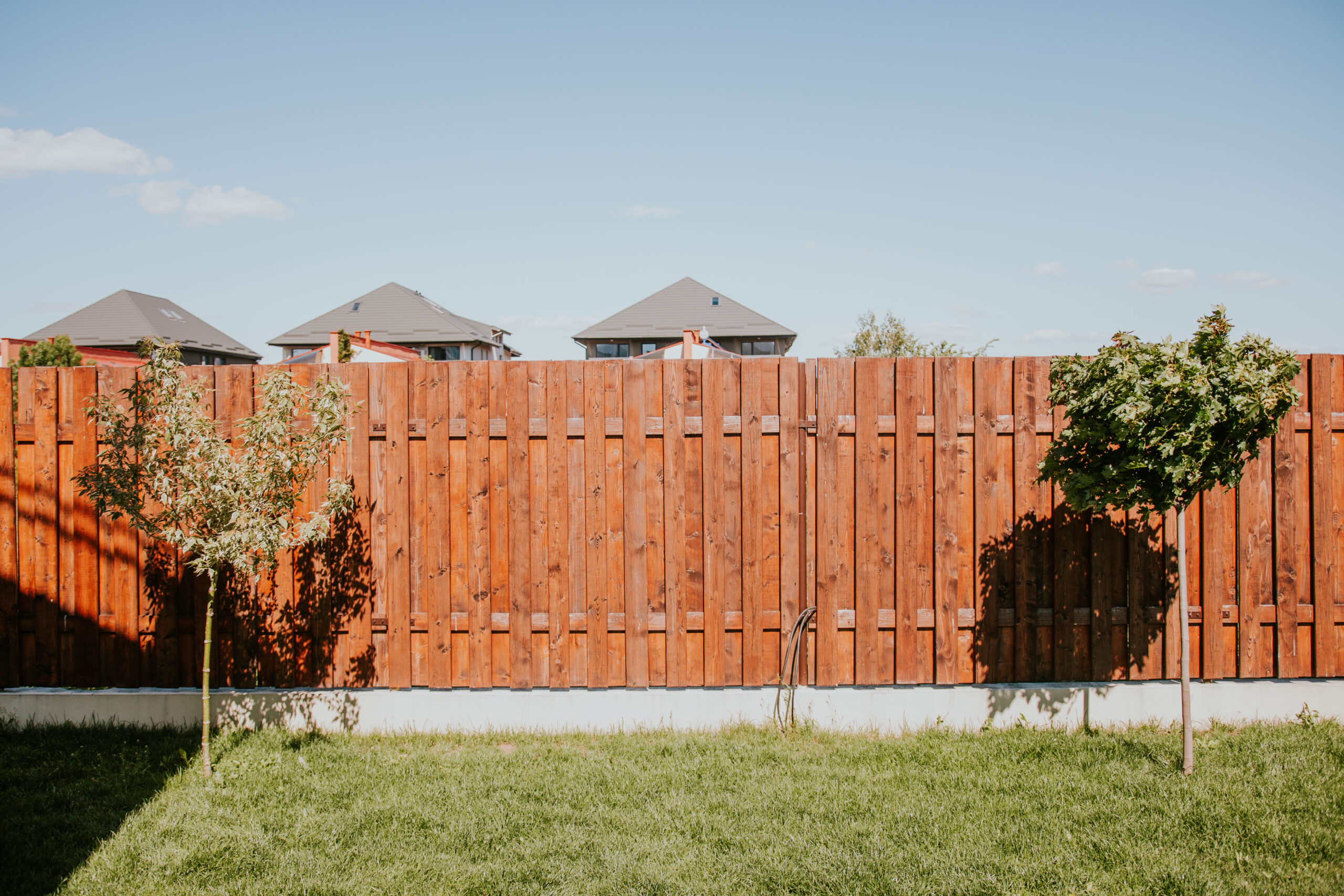All Categories
Featured
Different areas have varying guidelines, and recognizing what's called for will aid make sure that your fence is lawful, safe, and developed according to regional standards. Below's an overview to help you browse the allowing procedure for fence installment.
Why Are Allows Required? Authorizations are called for to make certain that the setup of your fence fulfills regional structure codes and zoning legislations. These guidelines are in location to preserve the safety, appearance, and performance of homes in your community. Additionally, allows help stay clear of conflicts with neighbors relating to residential or commercial property lines, fence height, and various other structural information.
Local authorities call for permits to keep an eye on points like visibility at intersections, public safety and security, and prospective damages to energies like pipes or electrical lines. The procedure helps keep your fencing task compliant with safety and legal criteria.
Sorts Of Licenses You Might Require. The precise licenses needed can differ relying on your place and the specifics of your project. Below are the most typical sorts of authorizations you may require:
Building License. Lots of cities and areas call for a structure authorization for fencings that go beyond a specific height, usually over 6 feet. This permit guarantees that your fencing adheres to structural criteria, particularly if it's made from certain products such as concrete, steel, or block. Structure authorizations are likewise needed when your fence impacts the total landscape, like producing an or blocking a sightline.
Zoning Permit. Zoning licenses are released to make sure that your fence abides by neighborhood zoning regulations. These regulations may manage where fencings can be positioned on your building (e.g., front, yard, or side), how high they can be, and whether they can be installed near walkways or roads. Zoning laws are put in location to protect the total visual appeals of areas and maintain web traffic security.
Setback License. Some locations have problem laws that figure out how much a fencing needs to be from the residential property line, roadway, or certain public rooms. Setback authorizations are designed to ensure that your fence does not interfere with surrounding residential or commercial properties or public locations. A residential property study might be called for to confirm building lines before acquiring this kind of authorization.
HOA Authorization. You might need to get approval from the HOA before installing a fencing if you live in an area controlled by a Homeowners Organization (HOA) HOAs often have rigorous guidelines concerning the type of fencing allowed in the area, including its height, material, and color. Always contact the HOA prior to beginning your job to avoid any problems.
Just How to Make An Application For a Fence License. The process for acquiring a permit commonly entails numerous actions:
Study Local Laws. Start by examining your city or area's internet site to learn the specific demands for fencing installation. You may require to go to the neighborhood planning or building division personally for more comprehensive details.
Prepare Your Application. The majority of cities will need an application kind, which includes details concerning your planned fence, such as:
![]()
The kind of fence material (timber, vinyl, chain-link, etc) The prepared height of the fencing. The area and dimensions of the fence. A home study (to verify home lines) Send the Application. After completing the application, submit it to the local building or zoning office. You may be called for to pay a fee depending upon your area and the dimension of your fence. Costs can vary, yet they normally cover the expense of processing your demand and assessing your strategies.
Await Authorization. As soon as your application is sent, the neighborhood authorities will examine your plans to ensure they satisfy zoning and developing requirements. This procedure can take anywhere from a few days to several weeks, relying on the complexity of the project and the volume of permit demands in your area.
![]()
Assessment (If Required) In many cases, you might require to schedule an evaluation after the fence is set up to guarantee it meets the required standards. Your local office will allow you recognize if this action is necessary.
When You Don't Required a Permit,. Not every fence installment needs a license. Some scenarios where you might not need a permit include:
Mounting a fence that's under a specific elevation (typically 3-4 feet for front yards) Replacing an existing fencing with one that coincides elevation and material. Setting up a temporary fencing (e.g., for building or horticulture) Nevertheless, also if your task seems little, it's constantly advisable to get in touch with neighborhood authorities to ensure you're adhering to the right process.
Consequences of Not Obtaining a License. Installing a fencing without the needed license can cause substantial repercussions, consisting of penalties, elimination of the fencing, and expensive reinstallation. In many cases, local authorities might require you to customize the fencing if it does not fulfill code demands. In addition, not getting an authorization could produce disputes with next-door neighbors, particularly if the fencing is placed incorrectly or goes against local height guidelines.
Verdict. Prior to setting up a fencing, it's important to look into the details permitting demands in your area. If a license is needed and to make sure that you're complying with the proper treatment, get in touch with your neighborhood structure or zoning division to discover out. By safeguarding the correct licenses, you'll make sure and prevent lawful issues that your fencing installment is safe, compliant, and problem-free.
Why Are Allows Required? Authorizations are called for to make certain that the setup of your fence fulfills regional structure codes and zoning legislations. These guidelines are in location to preserve the safety, appearance, and performance of homes in your community. Additionally, allows help stay clear of conflicts with neighbors relating to residential or commercial property lines, fence height, and various other structural information.
Local authorities call for permits to keep an eye on points like visibility at intersections, public safety and security, and prospective damages to energies like pipes or electrical lines. The procedure helps keep your fencing task compliant with safety and legal criteria.
Sorts Of Licenses You Might Require. The precise licenses needed can differ relying on your place and the specifics of your project. Below are the most typical sorts of authorizations you may require:
Building License. Lots of cities and areas call for a structure authorization for fencings that go beyond a specific height, usually over 6 feet. This permit guarantees that your fencing adheres to structural criteria, particularly if it's made from certain products such as concrete, steel, or block. Structure authorizations are likewise needed when your fence impacts the total landscape, like producing an or blocking a sightline.
Zoning Permit. Zoning licenses are released to make sure that your fence abides by neighborhood zoning regulations. These regulations may manage where fencings can be positioned on your building (e.g., front, yard, or side), how high they can be, and whether they can be installed near walkways or roads. Zoning laws are put in location to protect the total visual appeals of areas and maintain web traffic security.
Setback License. Some locations have problem laws that figure out how much a fencing needs to be from the residential property line, roadway, or certain public rooms. Setback authorizations are designed to ensure that your fence does not interfere with surrounding residential or commercial properties or public locations. A residential property study might be called for to confirm building lines before acquiring this kind of authorization.
HOA Authorization. You might need to get approval from the HOA before installing a fencing if you live in an area controlled by a Homeowners Organization (HOA) HOAs often have rigorous guidelines concerning the type of fencing allowed in the area, including its height, material, and color. Always contact the HOA prior to beginning your job to avoid any problems.
Just How to Make An Application For a Fence License. The process for acquiring a permit commonly entails numerous actions:
Study Local Laws. Start by examining your city or area's internet site to learn the specific demands for fencing installation. You may require to go to the neighborhood planning or building division personally for more comprehensive details.
Prepare Your Application. The majority of cities will need an application kind, which includes details concerning your planned fence, such as:

The kind of fence material (timber, vinyl, chain-link, etc) The prepared height of the fencing. The area and dimensions of the fence. A home study (to verify home lines) Send the Application. After completing the application, submit it to the local building or zoning office. You may be called for to pay a fee depending upon your area and the dimension of your fence. Costs can vary, yet they normally cover the expense of processing your demand and assessing your strategies.
Await Authorization. As soon as your application is sent, the neighborhood authorities will examine your plans to ensure they satisfy zoning and developing requirements. This procedure can take anywhere from a few days to several weeks, relying on the complexity of the project and the volume of permit demands in your area.

Assessment (If Required) In many cases, you might require to schedule an evaluation after the fence is set up to guarantee it meets the required standards. Your local office will allow you recognize if this action is necessary.
When You Don't Required a Permit,. Not every fence installment needs a license. Some scenarios where you might not need a permit include:
Mounting a fence that's under a specific elevation (typically 3-4 feet for front yards) Replacing an existing fencing with one that coincides elevation and material. Setting up a temporary fencing (e.g., for building or horticulture) Nevertheless, also if your task seems little, it's constantly advisable to get in touch with neighborhood authorities to ensure you're adhering to the right process.
Consequences of Not Obtaining a License. Installing a fencing without the needed license can cause substantial repercussions, consisting of penalties, elimination of the fencing, and expensive reinstallation. In many cases, local authorities might require you to customize the fencing if it does not fulfill code demands. In addition, not getting an authorization could produce disputes with next-door neighbors, particularly if the fencing is placed incorrectly or goes against local height guidelines.
Verdict. Prior to setting up a fencing, it's important to look into the details permitting demands in your area. If a license is needed and to make sure that you're complying with the proper treatment, get in touch with your neighborhood structure or zoning division to discover out. By safeguarding the correct licenses, you'll make sure and prevent lawful issues that your fencing installment is safe, compliant, and problem-free.
Latest Posts
Explore Oil Changes & More: Complete Auto Care Solutions from Montclare Auto Repair
Published May 29, 25
1 min read
Explore Oil Changes & More: Complete Repair Options from Montclare Auto Repair
Published May 25, 25
1 min read
Check Out Affordable Auto Repairs with Montclare’s Limited-Time Service Specials
Published May 22, 25
1 min read
More
Latest Posts
Explore Oil Changes & More: Complete Auto Care Solutions from Montclare Auto Repair
Published May 29, 25
1 min read
Explore Oil Changes & More: Complete Repair Options from Montclare Auto Repair
Published May 25, 25
1 min read
Check Out Affordable Auto Repairs with Montclare’s Limited-Time Service Specials
Published May 22, 25
1 min read